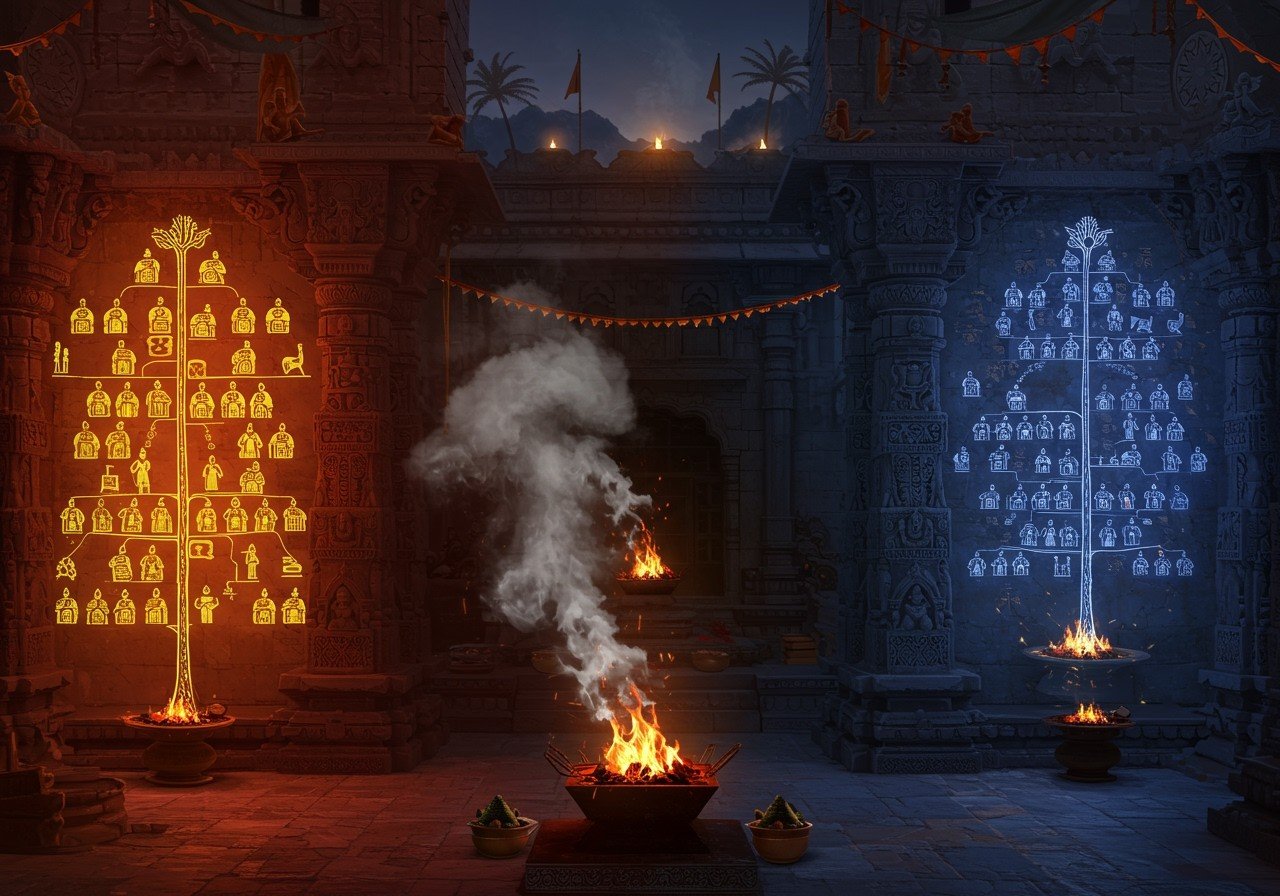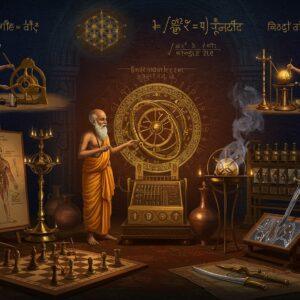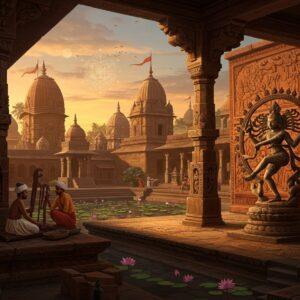
In India, Gotra and Caste are integral parts of Hindu society, deeply rooted in history and influencing social structures, cultural practices, and religious beliefs. As traditions evolve, understanding these concepts becomes crucial, especially for those who value their cultural heritage.
Understanding Gotra: Ancestral Lineage
Gotra is a lineage-based system classifying individuals based on their paternal ancestry, tracing back to ancient sages (Rishis). Each Gotra carries the name of a revered sage considered the common ancestor. This system is vital in Hindu rituals and ceremonies, where specific Gotras are invoked, playing a crucial role in marriage customs by prohibiting unions within the same Gotra to ensure genetic diversity. Understanding your Gotra helps preserve family lineage and uphold traditional practices during significant life events.
Understanding Caste: Social Structure and Hierarchy
The caste system, also known as Varna, categorizes Hindu society into four primary groups: Brahmins (priests and scholars), Kshatriyas (warriors and rulers), Vaishyas (merchants and traders), and Shudras (laborers and service providers). Traditionally, each Varna is associated with specific occupations and social roles, forming the basis of social hierarchy. Within these Varnas exist numerous sub-groups called Jatis, representing communities with shared cultural practices and social identities, adding complexity to the caste structure. Over time, Jati has become integral in defining social interactions and community ties.
The caste system’s historical context traces back to ancient scriptures and societal norms. Though the system’s rigidity has evolved, it continues to influence social mobility and identity. While modern laws advocate for equality, traditional influences remain strong in various communities.
Gotra and Caste: Distinct Yet Interconnected
Gotra and caste serve distinct purposes within Hindu society. Gotra emphasizes lineage, while caste relates to occupation and social status. Both are hereditary but have different societal roles. In marriage customs, Gotra ensures genetic diversity by prohibiting marriages within the same lineage, whereas caste traditionally encourages cultural continuity through unions within the same social group. Gotra, due to its ancestral roots, tends to be more rigid, while caste demonstrates adaptability, influenced by economic and social changes. Despite their differences, they coexist and intersect, shaping societal norms.
Navigating Social Norms: The Interplay of Gotra and Caste
The interplay of Gotra and caste influences various life aspects, including marriage and rituals. Marriages often require adherence to rules from both systems, with families seeking alliances that respect Gotra exogamy (marrying outside the Gotra) and caste endogamy (marrying within the caste). Religious ceremonies reflect this interplay, invoking specific Gotras to honor ancestors and maintain lineage purity. Caste-based traditions shape festival celebrations and community gatherings.
This intersection presents challenges in modern times, as evolving values emphasize equality and individual rights. Balancing respect for heritage with contemporary ideals becomes essential.
Modern Perspectives: Tradition in a Changing World
In today’s globalized world, perspectives on Gotra and caste are evolving, especially among middle to upper-middle-class Indians who navigate these traditions with new insights. Urban communities often blend traditional practices with modern values. Online platforms are facilitating Gotra-based matchmaking, offering convenience while respecting customs. Technology aids in preserving cultural practices while adapting to current lifestyles.
The tension between tradition and modernity remains, as educated individuals strive to honor their heritage while advocating for inclusivity. This reflects a society in transition, valuing both past wisdom and future possibilities.
Poojn.in: Your Partner in Rituals and Traditions
Poojn.in supports your spiritual journey by providing essential items and guidance for Gotra and caste-related ceremonies. As India’s leading provider of cultural and religious goods, we offer:
- Complete puja samagri kits customized to your Gotra.
- Expert consultation on ritual requirements based on your Gotra and caste traditions.
- Authentic ritual items sourced directly from trusted manufacturers.
- Detailed product descriptions explaining the significance in Gotra-specific ceremonies.
- Easy online ordering with doorstep delivery across India.
- Access to verified priests for guidance on rituals.
For personalized assistance with selecting the right puja items, contact us at:
- Phone: 03369029784
- WhatsApp: 9476142738
Our knowledgeable team is dedicated to helping you maintain ritual authenticity with the convenience of online shopping. All products come with quality assurance and secure packaging to preserve their sanctity. Visit www.poojn.in to explore our complete range of ritual items and puja samagri. We ship across India with secure packaging to ensure the purity of sacred items. Shop Puja Samagri Now.
Embracing Heritage, Embracing Change
The concepts of Gotra and caste represent a rich tapestry of tradition woven into the fabric of daily life. These systems, though ancient, remain relevant, shaping identities and social connections, influencing marriages, rituals, and our understanding of our place in the world.
As we navigate the balance between tradition and modernity, we honor our ancestral wisdom while embracing the need for growth and change. Technology and education provide new possibilities, allowing us to adapt without losing our roots. For middle to upper-middle-class Indian families, this delicate balance is a testament to resilience and adaptability. By embracing both heritage and progress, we can forge a path that respects our traditions while welcoming the future. Consider exploring our range of sacred threads and other ritual items at poojn.in.
FAQs: Gotra and Caste
What is the difference between gotra and caste? Gotra is your family’s ancestral lineage, tracing back to a sage. Caste is a broader social group related to traditional occupations and social standing.
Is gotra related to caste? They’re connected but different. Gotra is about lineage, while caste is about social hierarchy.
Can two people of the same caste have different gotras? Absolutely. People in the same caste can have different ancestral lineages.
Can people from different castes have the same gotra? Yes, as gotra is about ancestry, not social grouping.
How is gotra determined? It’s passed down from your father, connecting you to your paternal ancestors.
Why is gotra important in Hindu marriages? Traditionally, marriages within the same gotra are avoided to prevent potential genetic issues.
How does the concept of caste affect daily life? While its influence is changing, caste can still affect social interactions and customs in some communities.
Do all religions in India follow the concept of gotra and caste? Gotra is specific to Hinduism. The caste system primarily affects Hindus but can have some impact on other religious communities in India as well. You can find relevant resources on Hinduism and its diverse traditions here. For a deeper understanding of Dharma and Karma in Hinduism, check out this insightful blog post.


